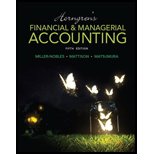
Organizing a corporation and issuing stock
John and Michael are opening a paint store. There are no competing paint stores in the area. They must decide how to organize the business. They anticipate profits of $100,000 the first year, with the ability to sell franchises in the future. Although they have enough to start the business now as a
Requirements
1. What is the main advantage they gain by selecting a corporate form of business now?
2. Would you recommend they initially issue preferred or common stock? Why?
3. If they decide to issue $10 par common stock and anticipate an initial market price of $40 per share, how many shares will they need to issue to raise $2,250,000?
Want to see the full answer?
Check out a sample textbook solution
Chapter 13 Solutions
Horngren's Financial & Managerial Accounting (5th Edition)
- Find Cost account answerarrow_forwardHurwitz, LLC sells a parcel of waterfront land and a residential condo building with an adjusted tax basis of $100,000 and 50,000, respectively for $500,000. The original purchase price Hurwitz, LLC allocated to the building was $600,000. Hurwitz LLC has deducted $550,000 in depreciation expense. Hurwitz, LLC's realized gain on this transaction is $350,000. If Hurwitz LLC takes back a note as part of the proceeds, what is Hurwitz LLC's gross profit percentage? A. 83.33% B. 71.43% C. 70% D. 50% E. 30%arrow_forwardprovide answer of this Financial accounting questionarrow_forward
